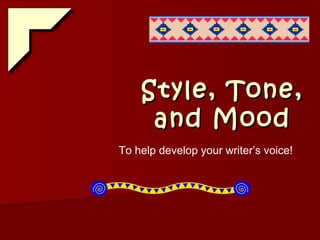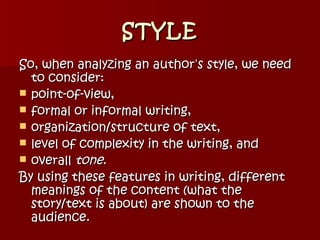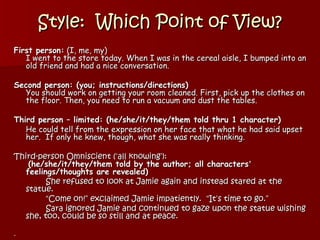This document discusses style, tone, and mood in writing. It defines each concept and provides examples. Style refers to an author's unique writing patterns including word choice, sentence structure, point of view, and text organization. Tone is the author's attitude conveyed through descriptive language. Mood is the overall feelings created in the reader through the author's word choices and detail. The document encourages building a vocabulary of descriptive words to aid in identifying an author's tone and a text's mood.
















